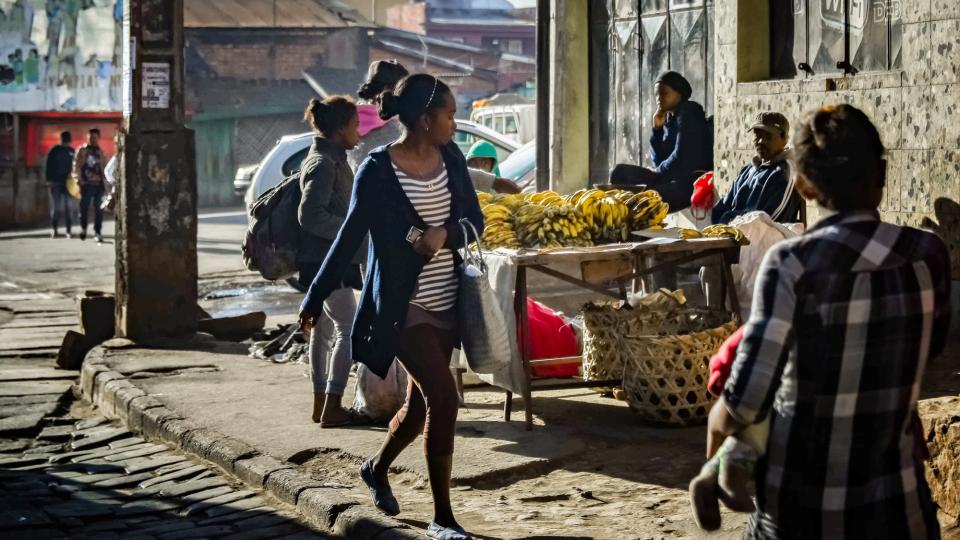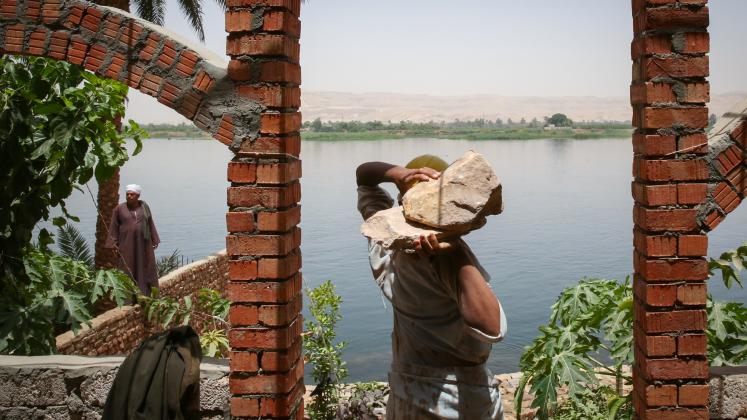When the question of creating good jobs and decent work in Africa arises, policymakers and development partners often focus on formalization. For decades, the discourse around informality has focused on how to transition informal workers to formal jobs. We have been considering formal and informal jobs as a binary choice, without properly considering the spectrum of jobs Africa’s workers are employed in. Empirical investigation reveals the nuance in the different types and tiers of employment across African economies.
In the new book, The Job Ladder: Transforming Informal Work and Livelihoods in Developing Countries, longitudinal data from a range of low- and middle-income countries is used to examine a multi-tier labour market framework. In this framework, all jobs fall into one of six work status classifications: formal self-employment, formal wage employment, upper-tier informal self-employment, lower-tier informal self-employment, upper-tier informal wage employment, and lower-tier informal wage employment. This nuanced model of worker placement on the ‘job ladder’ allows us to better understand the distribution of work statuses and associated incomes, and transitions between the two over time.
Stuck at the bottom
Lower tier informal wage and self-employed workers, at the bottom of the job ladder, account for 70% of the workforce in some African countries. The jobs at the bottom of the ladder offer lower incomes, less security, and a greater dearth of entitlements and protections. What are Africa’s prospects for inclusive growth and prosperity if so many people are stuck working for very low incomes?
To make matters worse, our research reveals that informal workers in informal self-employment in Africa rarely move up the job ladder. They are stuck at the bottom. This may be a stumbling block for Africa’s growth prospects and a barrier to achieving the SDGs.
The question is, what can be done to increase the demand for workers in African economies, to transition large numbers of lower-tier informal workers up the job ladder? This requires attention from research and policymakers and will need action from governments and international development organizations. The ability to create good jobs for the large numbers of informal workers would be a transformative catalyst for growth and development on the continent.

What can African countries do?
Firstly, policymakers in African can focus on adding value to their vast natural resource endowments, including elements which are vital to the green energy transition. This requires developing and investing in firms and value chains across all material categories (biomass, fuels, ores, etc.), especially in the manufacturing sector. This can help to create good jobs.
Right now, 65% of exports from Africa are unprocessed raw materials. Adding value to fuels, ores, or biomass prior to export boosts trade and foreign exchange earnings and generates enormous demand for labour. To achieve this, African nations require support and investments in private projects that develop value chains in this sector.
Next, many African economies are dominated by the service sector — especially non-business services — which tends to be low-productivity. Low-productivity sectors are notorious for creating relatively poorly paid jobs. To boost high productivity sectors, policies that promote business investments and seek to harness the benefits of the African Continental Free Trade Area will be essential. Targeted trade finance (such as pre-export finance and credit for enterprises adding value for export), improving trade logistics, infrastructure, and the bureaucratic elements that prevent movement of goods and services are crucial to mitigate value of trade lost.
It is also important for African policymakers to identify sub-sectors and firms that have the capacity to generate more jobs at the top of the job ladder. Policies can then be designed to expand these sectors and create opportunities for lower- and upper-tier informal workers to climb up the job ladder.
Related to this is the need for vocational training. It is vital to understand the skills and training workers need to take up opportunities in these sectors. This ensures that the jobs created can be filled by those at the bottom of the job ladder, many of whom might not yet have the skills or training.
Finally, although urbanization is proceeding quickly in Africa — the continent has more than two-thirds of the world’s fastest growing cities — African cities have not yet realized their full potential as engines of inclusive and resilient growth. There is a need for a new urban agenda that harnesses urbanization to create productive jobs and promote economic transformation. This will require investments in infrastructure such as residential structures, public services, and transport to connect establishments and households. To achieve this, city authorities will need to make a bold investment case to the private sector.
A fruitful future
While research shows it is difficult to move up the job ladder, and indeed many workers get stuck at the bottom in Africa, that phenomenon does not need to continue. With the right policy interventions in the labour market, reforms and investments in sectors that can create more jobs, and investment in infrastructure and public services in urban areas, it is possible to buck the trend. It should be a policy priority to create opportunities, upskill workers, and allow for their greater movement up the job ladder. More research is needed to shed more light on how to empower Africa’s workers to pull themselves up.
The views expressed in this piece are those of the author and do not necessarily reflect the views of the United Nations University or the programme/project donors.
This article was first published on the UNU-WIDER website. Read the original article.
Suggested citation: Danquah Michael., "Stuck at the Bottom of the Job Ladder in Africa," UNU Centre, UNU-WIDER (blog), 2023-10-17, 2023, https://unu.edu/blog-post/stuck-bottom-job-ladder-africa.





